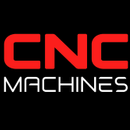AI: The Key to Increasing Worker Efficiency in American Manufacturing

AI: The Key to Increasing Worker Efficiency in American Manufacturing
As American manufacturing grapples with a shortage of skilled labor and a growing skills gap, Artificial Intelligence (AI) is emerging as a transformative solution. By enhancing worker efficiency and productivity, AI addresses the challenges of knowledge and skills gaps while filling the void left by experienced labor shortages. This article explores how AI is reshaping the manufacturing landscape, complete with a case study that highlights its impact.
The Challenges in American Manufacturing
Skills Gap and Knowledge Gap
American manufacturing faces significant challenges, primarily stemming from a skills gap and a knowledge gap:
- Skills Gap: As seasoned workers retire, there is a lack of new talent with the necessary skills to operate advanced machinery and technology. The younger workforce often lacks the hands-on experience required in manufacturing settings.
- Knowledge Gap: Many workers struggle to recall intricate processes and specifications needed to perform their tasks effectively. This gap can lead to errors, increased downtime, and diminished productivity.
How AI Addresses These Challenges
1. Increasing Worker Efficiency and Productivity
AI technologies can streamline operations and enhance productivity through:
- Automated Checklists: AI-powered checklists ensure that workers follow standardized processes without the burden of memorizing every step. This reduces the risk of human error and enhances overall efficiency.
- Real-Time Monitoring of Productivity: AI systems can monitor machinery and employee performance in real time, providing insights into productivity levels. This allows managers to identify bottlenecks quickly and address issues as they arise.
2. Providing Key Information and Feedback
AI can serve as a knowledge repository, offering real-time access to crucial information:
- Key Information Lookup: Workers can quickly access specifications, guidelines, and best practices through AI-powered systems, eliminating the need to remember complex details. This allows them to focus on the task at hand, enhancing performance and reducing the likelihood of mistakes.
- Instant Feedback: AI can provide immediate feedback on performance metrics, allowing workers to adjust their methods in real time. This feedback loop helps them learn and improve continuously.
Case Study: Enhancing Manufacturing Efficiency with AI
Company Overview
A leading automotive parts manufacturer, AutoComponents Inc., faced significant productivity challenges due to a high turnover rate and the retirement of experienced staff. The company struggled to meet production deadlines, and the lack of skilled workers impacted product quality.
Implementation of AI Solutions
To address these challenges, AutoComponents Inc. implemented an AI-driven productivity enhancement program:
- Automated Checklists: The company developed AI-powered checklists that guided workers through complex assembly processes. These checklists included visual aids and reminders, ensuring that no steps were overlooked.
- Real-Time Monitoring: The AI system monitored machine performance and worker productivity, sending alerts for deviations from standard operating procedures. This enabled supervisors to address issues immediately, minimizing downtime.
- Knowledge Repository: An AI-based platform was introduced, allowing workers to access key information and technical documentation on-demand. Workers could look up specifications and best practices using voice commands or touchscreens.
Results
The implementation of AI solutions at AutoComponents Inc. yielded impressive results:
- Productivity Increase: Overall productivity improved by 25% within six months of AI implementation. Workers became more efficient, and production targets were consistently met.
- Reduced Errors: The automated checklists and real-time monitoring reduced errors by 30%, leading to a decrease in rework and improved product quality.
- Enhanced Worker Confidence: With easy access to information and instant feedback, workers felt more empowered and confident in their abilities, leading to increased job satisfaction and reduced turnover rates.
Conclusion
AI is not just a technological advancement; it is a crucial tool for increasing worker efficiency, productivity, and addressing the skills and knowledge gaps in American manufacturing. By providing automated checklists, real-time monitoring, and instant access to key information, AI allows workers to focus on their tasks and perform them with greater accuracy.
As American manufacturing continues to face labor challenges, embracing AI solutions will be vital for companies seeking to remain competitive and successful. The case of AutoComponents Inc. serves as a powerful example of how AI can transform manufacturing operations, fill the void of skilled labor, and pave the way for a more efficient and knowledgeable workforce. Embracing this technology will not only enhance productivity but also secure the future of American manufacturing in an increasingly complex landscape.


